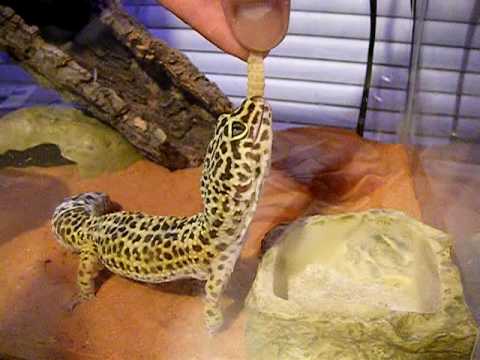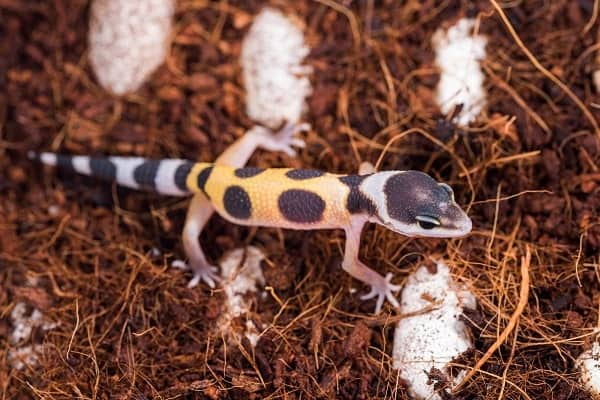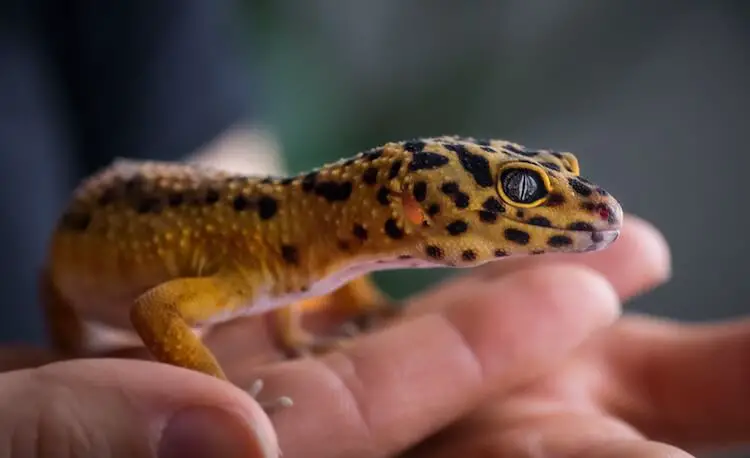The leopard gecko is one of the most popular pet reptiles, known for its docile nature, ease of care, and wide variety of colors and patterns. An essential part of caring for a leopard gecko is establishing and following an appropriate leopard gecko feeding schedule. Understanding your leopard gecko’s nutritional needs at different life stages will help ensure your pet stays healthy. In this article, we will discuss what to feed a leopard gecko and how often to feed based on age.
What to Feed a Leopard Gecko

Leopard geckos are insectivores, meaning they eat insects and other invertebrates. It is important to feed them a varied diet to meet all their nutritional requirements. Here are some appropriate feeder insects for leopard geckos:
- Crickets – A staple feeder insect. They should be about the length between the gecko’s eyes. Try to feed crickets that are no bigger than the space between the gecko’s eyes.
- Mealworms – Another good staple feeder, but due to their hard exoskeleton they should only make up part of the diet.
- Waxworms – High in fat so only feed in moderation as an occasional treat.
- Roaches – Dubia roaches or discoid roaches are also nutritious feeders if available.
- Superworms – Only for adult geckos, as superworms have hard exoskeletons.
In addition to insects, it is essential to provide proper calcium and vitamin supplementation. Dust insects with calcium powder without vitamin D3 at every feeding for juveniles and 2-3 times per week for adults. Use a multivitamin supplement with vitamin D3 once or twice a month.
Leopard Gecko Feeding Schedule by Age
The frequency and amount to feed leopard geckos depends on their age:
Hatchlings (0-6 months)

- Feed daily or every other day
- Provide as many appropriately-sized feeder insects as they will eat in a 15 minute period, usually 5-15 insects
- Small crickets or mealworms are best
Hatchlings are growing quickly so they need extra food and nutrition. Feed them daily or every other day. Offer appropriately-sized crickets or mealworms and let them eat as much as they want in a 15 minute window. Dust insects at every feeding.
Juveniles (6-12 months)

- Feed every other day
- Offer 7-10 appropriately-sized insects
- Crickets, small mealworms, small dubia roaches are ideal
As they grow into juveniles, leopard geckos can start being fed slightly less frequently, about every other day. Offer a number of feeders like 7-10 insects within their preferred size range. Dust prey with supplements as recommended above.
Adults (12+ months)
- Feed 2-3 times per week
- Offer 4-6 appropriately-sized feeder insects
- Crickets, mealworms, dubia roaches, superworms
Adult leopard geckos can be fed smaller amounts but more sparingly, just 2-3 times per week. Four to six properly-sized feeder insects are sufficient. Continue to provide a variety like crickets, mealworms, dubia roaches, or superworms.
Over 1 year old
- Can feed once or twice a week
- Offer 3-5 insects per feeding
Once a leopard gecko is over a year old, their growth has slowed down significantly. They can be very safely fed fewer times per week – just once or twice weekly is enough. When you do feed them, offer just 3-5 appropriately-sized insects.
Conclusion
Following the proper leopard gecko feeding schedule provides your pet gecko with optimal nutrition. Hatchlings and juveniles should be fed more frequently – daily or every other day. Adults can be fed just 2-3 times per week. Tailor the number of insects based on the gecko’s age and always provide size-appropriate prey. A variety of gutloaded feeder insects and proper supplementation helps support your leopard gecko’s health and growth. Paying close attention to your leopard gecko’s feeding routine is essential for raising a healthy, thriving pet.
FAQs About Leopard Gecko Feeding Schedule
Is it necessary to feed leopard geckos at night or during the day?
Leopard geckos are nocturnal, meaning they are most active at night. It’s best to feed them during the evening or nighttime hours to align with their natural behavior and ensure they are awake and hungry when you offer food.
What types of insects are suitable for a leopard gecko’s diet?
Leopard geckos primarily thrive on a diet of live insects. Suitable options include crickets, mealworms, dubia roaches, and waxworms (in moderation). Insects should be appropriately sized and gut-loaded with nutritious foods for a well-balanced diet.
Can I feed my leopard gecko on a specific time schedule?
Yes, establishing a consistent feeding schedule is beneficial for leopard geckos. Feeding at roughly the same time each day or night helps regulate their appetite and ensures they receive regular nutrition. Consistency also makes it easier to monitor their health and appetite.
Should I adjust the feeding schedule during the breeding season?
Yes, during the breeding season, it’s advisable to adjust the feeding schedule for breeding females. They may require more frequent and slightly larger meals to support egg production. Consult a reptile expert or veterinarian for precise guidance on adjusting the feeding schedule during this time.
How long should I wait after feeding to handle my leopard gecko?
After feeding, it’s best to avoid handling your leopard gecko for at least 24 hours. Handling immediately after a meal can stress the gecko and may lead to regurgitation. Allow them time to digest their food and regain their energy before gentle handling or interaction.




